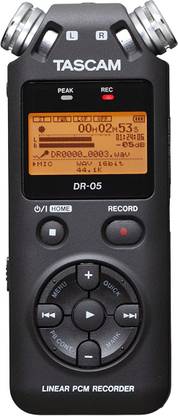To get the sine wave back, We simply plot these numbers on a graph then connect the dots. But now, we know the two most crucial parts of digital sound the sample rate and the bit depth, perhaps the most common sample rate and bit depth of digital sound is 44.1 kilohertz 16 bits.
This means that every second 44,100 samples are taken in each sample can be one of 65536 values. Or two to the power of 16 and that's how devices like this a

It's looking at the voltage coming from the microphone and taking precise measurements every forty four point one thousandth of a second. It takes the voltage reading and well right sit down it furiously quantifying and logging the voltage and measures with 16 bits of accuracy. And the result is a string of numbers that logically represent the shape of the sound waves that exerted pressure on the microphones.
And it can actually write down to numbers at a time since this has two microphones and Records in Stereo inside. This recorder is what's called an analog to digital converter or ADC and is the actual device responsible for creating the stream of samples. It takes the analog signal coming from the microphones themselves and converts it into a string of discrete numbers. If you open the file that audacity makes or some other audio editing software. You see what looks like a wave form of the sound it is a waveform but a waveform that's been plotted.








0 comments:
Post a Comment